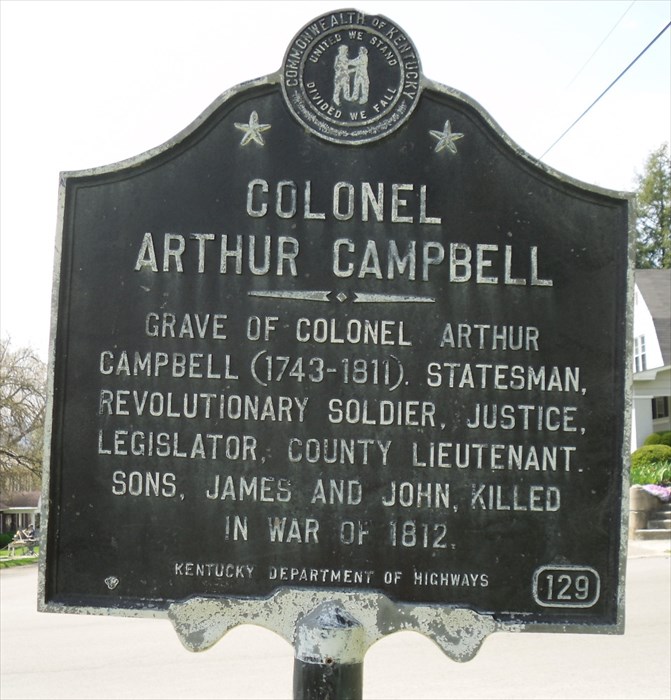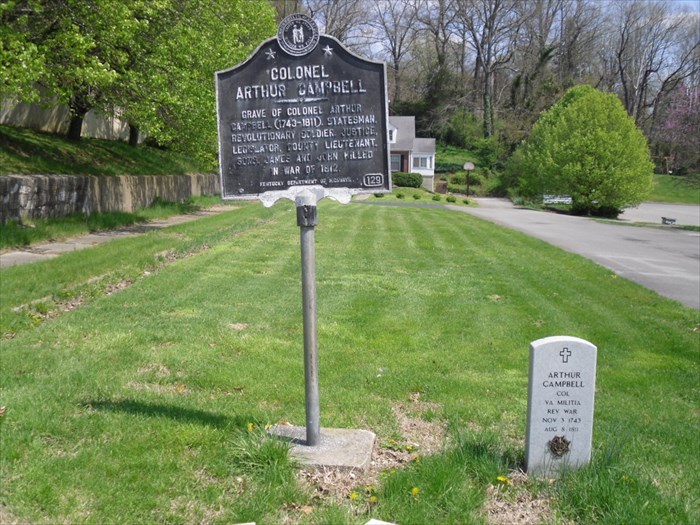Eventually, an American Indian chief took him under his protection and then took him to the French fort located near present-day Detroit.
With his knowledge of the western frontier, Campbell was eventually able to escape the Wyandottes and make his way to a group of British soldiers more than 200 miles away. The British were on a campaign into Western Indian Territory and engaged Campbell as a guide. Campbell was later awarded a grant of 1,000 acres near present-day Louisville, Kentucky, as a reward for his services.
During his lifetime, he was involved in many aspects of military and political life. Some of which include serving as a member of the committee that drafted the Address of the Freeholders of Fincastle, Virginia, and being chosen to represent Fincastle County, Virginia in the General Assembly in 1776. In January 1777, Campbell was appointed county lieutenant and commander in chief of the militia. During the Revolutionary War, Campbell enlisted in the Virginia Militia and became commander of the 70th Regiment of the Virginia Militia. In 1781, Campbell was one of the commissioners responsible for negotiating the Indian Treaties of 1781.
Campbell County was named for Colonel Arthur Campbell, a soldier of the Revolutionary War and Indian Wars. He was born on November 3, 1743, in Augusta County, Virginia, and was the son of David Campbell. At age 15, Campbell joined the Virginia Militia to help protect the Virginia Frontier. While stationed at a Dickerson’s Fort on the Cowpasture River in Bath County, Virginia, he and several others were out picking plums when a group of Wyandotte Indians surprised the group. A skirmish followed, and Campbell was captured after being slightly wounded in the knee. He spent the next three years as a prisoner of the Wyandottes and spent much of the time wandering through the Great Lakes territory. Eventually, an American Indian chief took him under his protection and then took him to the French fort located near present-day Detroit. With his knowledge of the western frontier, Campbell was eventually able to escape the Wyandottes and make his way to a group of British soldiers more than 200 miles away. The British were on a campaign into Western Indian Territory and engaged Campbell as a guide. Campbell was later awarded a grant of 1,000 acres near present-day Louisville, Kentucky, as a reward for his services.
During his lifetime, he was involved in many aspects of military and political life. Some of which include serving as a member of the committee that drafted the Address of the Freeholders of Fincastle, Virginia, and being chosen to represent Fincastle County, Virginia in the General Assembly in 1776. In January 1777, Campbell was appointed county lieutenant and commander in chief of the militia. During the Revolutionary War, Campbell enlisted in the Virginia Militia and became commander of the 70th Regiment of the Virginia Militia. In 1781, Campbell was one of the commissioners responsible for negotiating the Indian Treaties of 1781.
After the wars, Colonel Campbell settled on an estate on Yellow Creek, at the present site of Middlesboro, Kentucky. He married his cousin Martha Campbell. He lost two of his sons in the war of 1812; Captain James Campbell died at Mobile, Alabama, and Colonel John B. Campbell fell at the battle of the Chippewa. Colonel Campbell died August 8, 1811, at the age of 73 in Knox County, Kentucky.




